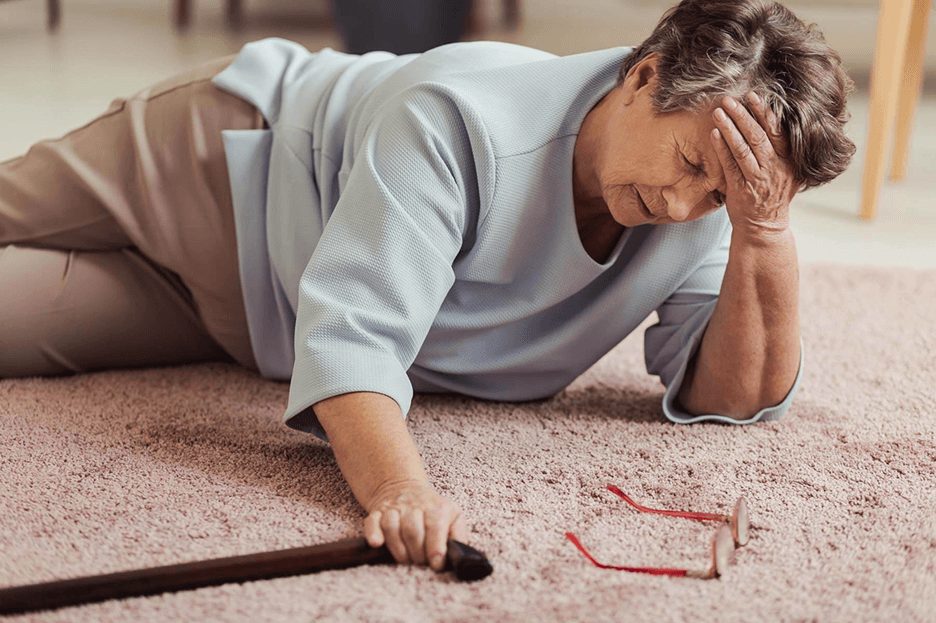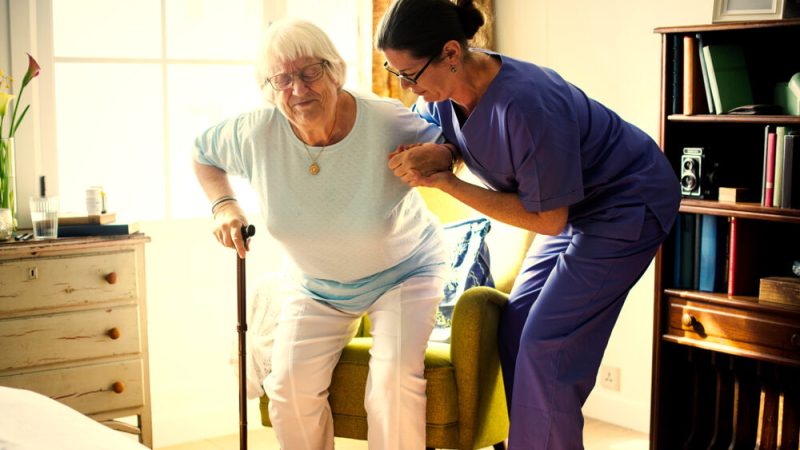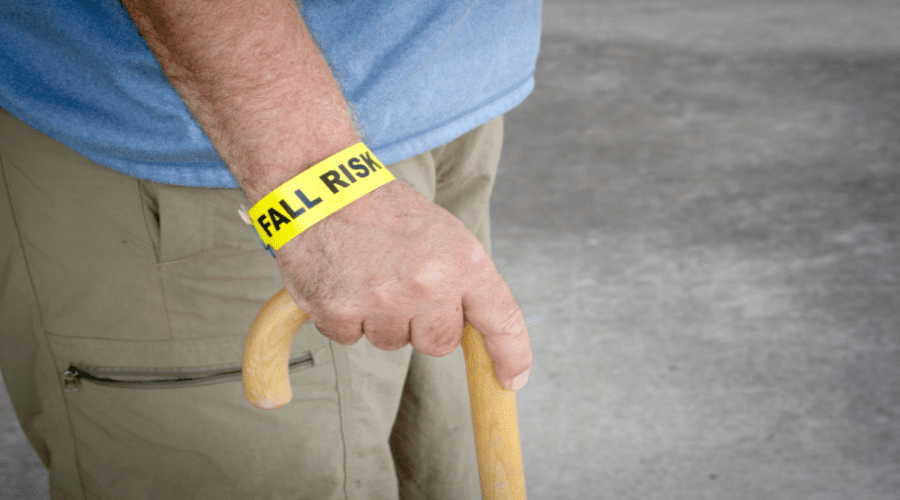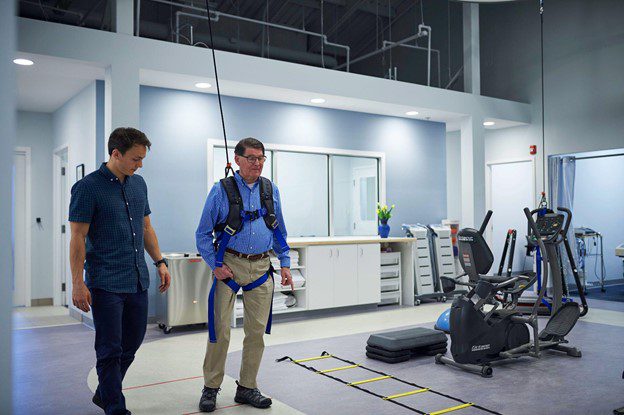Fall Prevention in Nursing Homes

Every year, over 3 million seniors visit American emergency rooms because of a fall. Falls are one of the leading causes of traumatic brain injury and cost over $50 billion in medical costs annually. Taking proactive measures can help prevent falls in nursing homes, where they are a particular risk to frail seniors.
The Importance of Fall Prevention

Fall prevention is key for nursing homes due to many factors. Falls are avoidable when nursing homes establish proper protocols, which can help save lives and money.
- Over $50 billion is spent annually on non-fatal falls &
- Over $754 million is spent yearly on fatal falls
Falls can also lead to more serious conditions, or even be fatal.
- Each year, 64 in 100,000 falls by adults 65 and older lead to death
Common Repercussions
Falls can contribute to many repercussions, including:
- Traumatic brain injury
- Fractures
- Lacerations
- Loss of independence
- Loss of mobility
- Physical therapy
- Chronic pain
Fall Risks and Warning Signs

Common Risk Factors
Some common risk factors for falls include:
- Weakness in the lower body
- Deficiency of Vitamin D
- Bad or blurry vision
- Balance Problems
- Sudden drops in blood pressure
Issues in Nursing Homes
Issues in nursing homes can cause dangerous environments for seniors. Some issues include:
- Overworking your staff
- High turnover rates can lead to a lack of proper training
- Poor lighting
- Wet floors
- Poorly maintained equipment
- Certain medications that increase the risk of falls
Medications that Increase Fall Risks
Certain medications can increase the risk of falls. From highest risk to lowest risk, they are:
Antipsychotics, anticonvulsants, and benzodiazepines
- May cause dizziness, poor balance, and impaired brain function.
Antihypertensives, cardiac drugs, antiarrhythmics, and antidepressants
- Can cause orthostatic hypotension (a drop in blood pressure upon standing), impaired brain function, and poorer health
Diuretics
- May cause increased movement and orthostatic hypotension
How to Recognize a Fall Risk Senior
Someone at risk of a fall may:
- Take medications
- Have chronic fall-related health conditions
- Experience functional decline
- Insist on independent mobility
How to Prevent Falls in a Nursing Home

There are many interventions a nursing home can take to ensure seniors are safe, like utilizing proper tools and performing proper evaluations. Nursing homes can minimize fall risks by:
- Increasing the number of fully trained staff members
- Making sure bed and wheelchair heights are safe
- Keeping resident areas well-lit and free of clutter
- Assessing the fall risk of residents at the time of arrival
- Offering low-risk exercise to improve balance and strength
Useful Tools
Some useful tools that can help seniors in your nursing home include:
- Safety rails
- Multiple light sources
- Mobility devices, like Solo-Step
- Protective clothing
- Non-slip mats in the bath and shower
- Frequent eye exams
Factors to Evaluate
Nursing homes should evaluate their patients’ health levels in order to perform proper care. Evaluate the patient’s:
- Fall history
- Mobility problems
- Medications
- Mental status
- Incontinence
- Equipment
- Vision
What are the 5 P’s of Fall Prevention?
The five P’s of fall prevention can help deliver optimal, safe, and superior patient care. The five P’s of fall prevention are used to help determine if a patient is susceptible to falls and ensure that the patient is safe from falls. They are: Pain, Potty, Periphery, Position & Pump.
Pain
Is the patient experiencing any pain? If they are in pain, report immediately.
Potty
Does the patient need to use the bathroom? If so:
- Offer help to the toilet
- Empty commode/urinal
- Offer hydration and nutrition
Periphery
Do they have all of their personal belongings within reach? If they need any belongings within reach, offer to move the items to a convenient location for them.
- Engage the patient and address emotional needs.
- Ask the patient/caregiver to put on the call light if the patient wants to get out of bed.
- Check if a patient has other needs or requests (e.g., phone calls, music, lighting).
- Ask the patient, “Is there anything else I can do for you before I leave the room?”
Position
Is the patient comfortable? Do they need to be repositioned?
- Help the resident get into a comfortable position.
- Ensure support devices are in the proper place and working.
Pump
Are all the patients’ pumps and items in their room plugged in?
- Ensure important items are placed within reach: bedside table, call light, phone, eyewear, etc.
Benefits of the Five P’s of Fall Prevention
- Ensures safety
- Increases patient satisfaction
- Improves clinical outcomes
- Decreases patient anxiety
- Builds the patient’s trust
- Provides the best possible care
- Reduces facility-acquired conditions
Patients who have access to their items, are comfortable, and have all their bathroom needs met are 50% less likely to fall. Many facilities implementing this approach have decreased the number of fall-related injuries and increased patient satisfaction.
Ensuring Safer Nursing Homes
Every year, millions of seniors experience falls while residing in nursing homes. Factors such as medications, confusion, and difficulties with walking contribute to these incidents, often resulting in severe injuries. Enhancing supervision and augmenting mobility aids in nursing homes can effectively reduce the risk of falls and prevent injuries. With the elderly population expanding, it has become increasingly important to protect patients from dangerous falls.